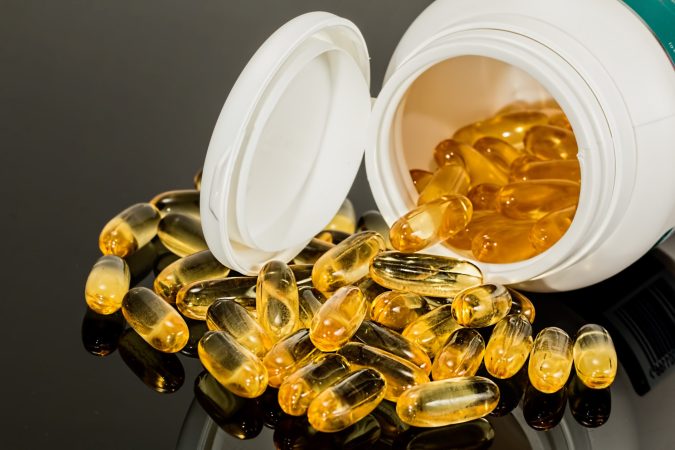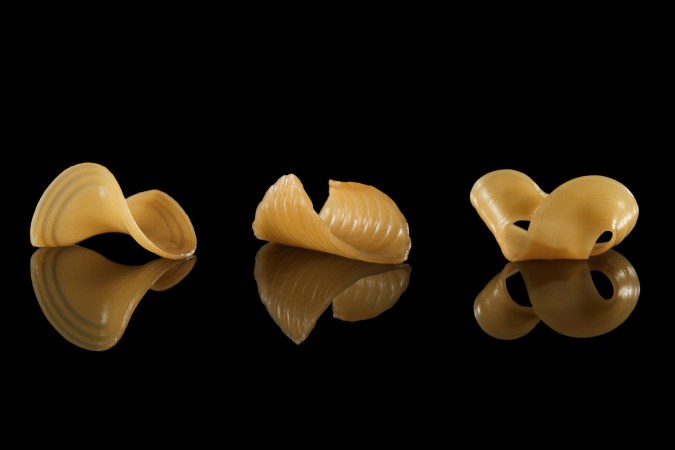


I recently interviewed Catherine Price, author of Vitamania: How Vitamins Revolutionized the Way We Think About Food. The book is a habit-altering romp through the seemingly banal topic of vitamins.
Price got the idea for her book when her husband asked her the question, “What’s a vitamin?” and Price found that she didn’t have an answer. Vitamins, to spare you the suspense, are organic compounds that we tend to come across in food—and without which we would die. There are 13 human vitamins: A, C, D, E, K and seven B vitamins (thiamine (B1), riboflavin (B2), niacin (B3), pantothenic acid (B5), pyroxidine (B6), biotin (B7), folate (B9) and cobalamin (B12)). But if that was all Vitamania was about, it would have made for a short book. Instead Price explores how the discovery of vitamins has shaped our diet, and our perspective on health.
Although the book was published in 2015, it couldn’t feel more relevant today. From Gwyneth Paltrow to Alex Jones of Info Wars, it seems like everyone is promising that vitamins— and their creepy alter ego, supplements—can soothe what ails us. Supplements are now a multi-billion-dollar industry that many say will continue to grow. But we’re not getting any healthier. Last year, U.S. life expectancy declined for the first time since 1993. How did we become a vitamin and supplement obsessed society, and why isn’t that keeping us from getting sick?
Price has a few ideas—and a few warnings to keep in mind the next time you’re staring down an aisle of supplements.
The following Q&A has been edited for length and clarity.
Vitamins have this healthy aura that feels mathematically precise. What do we really know about dosage?
The most definitive thing we know is how much you need not to die. I think some researchers would argue it’s more nuanced than that, but from a consumer perspective that’s really what it boils down to.
How does the Recommended Daily Allowance (RDA) that we see on labels fit into that?
The RDA is like the government trying to create a sweater that would fit 97 out of every 100 Americans. If you try to do that, you’d end up with a very large sweater that 97 out of 100 people could fit into. But that does not mean it’s the correct size for everyone. There’s 96 out of 100 people who could fit into a smaller sweater.
And, for the most part, the current recommendations are based on the highest recommendations from 1968. The FDA has not updated the recommendations that the daily values are based on. They’re supposed to be updated, but that’s probably going to get delayed until at least 2020.
For the next couple of years, when you look at the percent daily value for vitamins and minerals on the back of a food or a supplement, that is based off of very outdated recommendations. You shouldn’t be aiming for 100 percent.
How has the ability to make vitamins changed the American diet?
If it weren’t for synthetic vitamins, we would not be able to eat the way we today without getting horrible vitamin deficiencies. When were first able to synthesize vitamins in the 20s, 30s, and 40s, that really changed the kind of products that we were able to make. You had the processed food industry really start to take off, combined with this ability to put back nutrients that the processing had removed.
Breakfast cereal is one of the most egregious examples of this, because you’re essentially eating a multivitamin. They have vitamins incorporated into the dough, or, depending on what the vitamin is, some of them are actually sprayed on. It really is just like dust on top of your otherwise nutritionally vapid corn flake, and they call it a healthy start to your day.

But is this necessarily a bad thing?
When you’ve got a houseplant and you know that it needs water to survive, you may pour a gallon of water on it thinking it will just use what it needs and the rest will just pour out of the bottom of the pot. But the houseplant’s roots can get rotten, or they could grow a fungus, or there could be some other harm that’s caused by the excess water.
People say Americans have the most expensive urine in the world, because we take all of these vitamins and it’s no problem—we’re just peeing them out. But a couple of years ago, a woman killed herself by drinking too much water. If you can kill yourself drinking water, that’s a warning that just because you need something in a certain amount doesn’t mean that you can keep taking it ad infinitum, or that it will do something good for you. It’s possible that we’re triggering diseases that take a long time to develop, but that are a result of being saturated with vitamins all of the time.
I think the poor feedback loop is also true for dietary supplements, which are not vitamins, because people take all sorts of crazy shit. There are more than 85,000 supplements on the market in America, and one may not do anything bad to you immediately. But it could be that you have a daily dietary supplement habit and over years some kind of side effect develops. And then 15 years later you have a health problem and you don’t know it’s because of this product you were taking.
A lot of people think regulations will protect us from dietary supplements. Is that true?
Supplements are regulated, but not in the way that you or I as consumers would ever think that they would be regulated. They’re regulated under The Dietary Supplement and Health Education Act, which the industry helped to get passed. The law forbade the FDA from requiring that supplement manufacturers have to prove that their products are safe or effective before selling them.
If you think about it, it’s totally nuts. You should have some assurance that what’s sold on the shelf as a health product isn’t going to hurt you, and ideally is going to do what it says it’s going to do.
Some products that are advertised as dietary supplements are clearly substances that the average consumer would think would be a food. Like, some teas are dietary supplements instead of a food. And the reason is because there was less regulation if it was a dietary supplement then if it was a food.
If you bought a loaf of bread and it turned out it was actually a dozen eggs inside the package you’d probably complain. But the equivalent can and does happen pretty frequently with dietary supplements. A consumer went to buy a multivitamin and the bottle had penne pasta in it, which is an extreme version of not being able to predict what you’ll get. But more often, pretty dangerous stuff is snuck into dietary supplements like illegal prescription drugs.
Is there any way to know what you’re getting?
It’s extremely difficult, if not impossible from a consumer’s perspective to know for sure what’s in their products. If you’re going to buy them, definitely do research on which brands have been tested, and stick with the bigger brands. And definitely stay clear of sexual enhancement, body building, and weight loss. Those are the three categories that are adulterated the most with truly dangerous substances.
Even with vitamins, there are issues where they put overages into the vitamins or more of a vitamin than they say is on the label. They want to make sure that by the time you buy it, it has the dose it says. But they’ve had issues where that’s resulted in there being too much vitamin A, which can be toxic.
The best I can say is go to one of several websites where they’re actually testing things. The best one, in my mind, is ConsumerLab.com, which requires a subscription. You get a really good breakdown of what the research is and what it does and doesn’t show, and has products pulled off the shelf that are tested—not paid for by industry.
But it’s kind of crazy that you have to send somebody to a subscription-based website to get a true answer as to whether or not the product that they just spent 50 dollars on actually is what it says it is.
Given that you have Type 1 diabetes, have you ever been tempted by supplements?
I never really did go down that route. But I have, as an experiment for the book, gone into a supplement shop and said, “I have diabetes, what can you give me?”
They aren’t supposed to give you advice, because that’s medical advice. But they always have a whole selection of these various herbs and concoctions that are supposed to be helpful for blood sugar, which is dangerous. If a supplement product makes your blood sugar go very low or interferes with any of your medication, you could die.
Some of these things probably do have an effect on your blood sugar, so it’s scary to think that there’s no scientific evidence of what dose does what. There’s no guarantee of concentration in what you’re buying. There’s no warning about how it can interact with anything.
I lived abroad for a while, and one of the things I noticed is how less vitamin-obsessed people are overseas. Why do you think that is?
Something that we don’t recognize as consumers is how these 13 chemicals—and the way that they were marketed in the early part of the 20th century—completely revolutionized the way we think about food today.
They are miraculous because we need them to prevent diseases, but that was really taken advantage of by food marketers and the dietary supplement industry. Thy applied it to a much wider array of products—including not just pills, but also foods. I think you really start to see that in the 60s and the 70s with the natural food movement, and then when you fast forward to today you still see it in every single food trend that we have. It’s the way we think about food.
Michael Pollan (the author of Omnivore’s Dilemma) was the first person to really enunciate this in an eloquent way, but the reductionism that we use when we think about food is very remarkable and very, very, American. We don’t think, “is this bread delicious for my sandwich?” We think about how many nuts and seeds it has, and that flax seed has omega 3 fatty acids in it and omega 3 fatty acids are supposed to be healthy because they’re advertised on everything.
We basically break food down into components, and then we think about what effects those particular components are supposed to have on our health. We try to turn our meals into these nutritional math problems. And it leaves us so susceptible to things like the GOOP vitamins, or the idea that InfoWars is somehow going to be able to help our health.

Something else that blew my mind was the section about sourcing—where vitamins actually come from. Like the fact that Vitamin D often comes from the lanolin, or wool grease of Australian and New Zealand sheep, which is shipped to China, where it’s exposed to ultraviolet (UV) light, mimicking the process our skin uses to create vitamin D.
The main vitamin manufacturers didn’t really want to talk about where their production facilities are, but apart from like, a beta carotene manufacturer in Texas, there’s basically no vitamin manufacturing plants in America. When you say, “vitamin manufacturing” people think of the pills, and obviously, there’s thousands of places making vitamins in the states and hundreds of thousands around the world. But I’m talking about the raw ingredients for the pills and those are coming from other places in the world, particularly China.
Going back to what we were talking about before where it would be impossible for Americans to eat the way that we do without the help of synthetic vitamins, it’s interesting as a thought experiment to ask yourself, if someone really wanted to do a particularly clever kind of war against us, they could cut off or somehow adulterate the supply of synthetic vitamins coming in. It would probably take a while for people to figure out those diseases because we don’t see them very often.
What do you wish the public knew about vitamins?
The first question people often ask me is, “should I take a multivitamin?”
And I have no idea if you should take a multivitamin, I don’t know what your diet is like, I don’t know what medical conditions you have.
People want you to say yes or no, like it’s totally always a waste of time or its going to add years to your life. In reality, there’s cases where people probably should take a multivitamin, and there’s situations where someone is eating a lot of cereal and they’re essentially eating a multivitamin every day. They don’t need to take a multivitamin, but they could benefit by eating fewer processed foods. We want black and white answers, and there aren’t any. We have to learn to be more comfortable with nuance.
And you really should not be thinking about your food in terms of the numbers, or percent of vitamins and minerals that they have—because that information itself is wrong. When you recognize as a consumer that even the information on the package is not reliable, then you really have to rethink your approach towards eating and come at it at a more holistic way. Just ask, does this food naturally contain a lot of vitamins and minerals? Ok, then that’s probably a good way to get my vitamins and minerals. I’m not going to obsess about the particular number of milligrams that it has. I’m just going to eat the orange, or the red pepper.
I think the bottom line is it just points out that nutrition is not a math problem. At least not a math problem that we can solve at this point.















